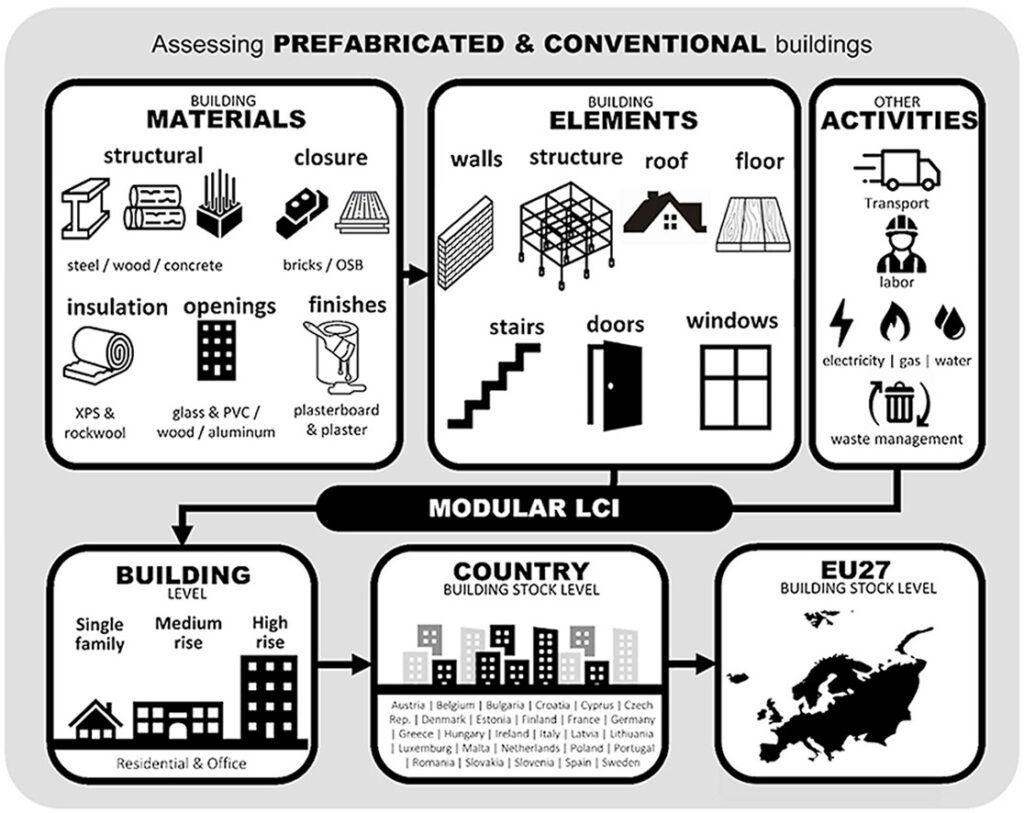Prefabrication can contribute to achieving the environmental goals of the European Union (EU) and reduce construction costs, thus increasing the sector's competitiveness and sustainability. The conclusion is from a study by the University of Coimbra (UC), with the collaboration of the MIT(MIT) in the United States of America.
Published in Building and Environment, a leading international journal in the field, the study aimed to assess the potential of prefabricated buildings to reduce costs and contribute to the achievement of the European Union's environmental objectives – the decarbonization of buildings by 2050 – and was carried out within the scope of the thesis PhD in sustainable energy systems by researcher Vanessa Tavares, supervised by Professor Fausto Freire, Department of Mechanical Engineering, Faculty of Science and Technology, University of Coimbra (FCTUC).
In this three-year investigation, prefabricated construction was compared with conventional construction, not only in terms of costs, but also in terms of the environment, in Lisbon, Berlin and Stockholm, three cities with different climates and different costs. of life.
«We studied two types of prefabricated construction (one in light steel and the other in wood) and, in contrast, conventional construction (in the city of Lisbon), usually based on concrete. To this end, we developed a life-cycle assessment model for different types of housing construction (single-family houses and medium and large-scale apartment buildings) and services, especially offices. The results were then scaled to represent the entire building stock of the European Union», explains the FCTUC researcher.
According to the results of the study, prefabrication can reduce the impacts of construction and demolition of buildings, in other words, clarify Vanessa Tavares and Fausto Freire, «if we choose to build a prefabricated building adapted to the climate, we can reduce 40% of impacts incorporated in buildings and up to 90% less at the end of the life cycle, with a similar energy consumption in its use. We are comparing conventional construction, which is heavy, with prefab construction, which is lightweight. Traditional construction uses five times more materials than prefab lightweight construction. Furthermore, at the end of its life, prefabricated construction waste is more easily recyclable and reusable».
In terms of global impacts across the European Union, considering the period between 2020 and 2050 (EU targets), the study reveals that prefabrication can reduce carbon emissions from buildings by 6% and construction costs by 10%.
This is because, the study's authors explain, “the replacement rate of buildings in Europe, which currently stands at around 2%, was taken into account. The results show that prefabrication alone cannot achieve the EU environmental objectives, but it can, in addition to energy efficiency measures and building rehabilitation, make a relevant contribution. Thus, prefabrication presents an opportunity to reduce construction costs and increase the competitiveness and sustainability of the sector».
On the evolution of prefabricated construction in Portugal, Vanessa Tavares believes that the “future passes through this type of construction, although currently it still represents a niche. With the automation, digitization and robotization processes, there are good reasons – cost reduction and environmental impacts – to increase the adoption of systems based on prefabrication. And there are other measures that can be associated, for example, betting on the rehabilitation of current buildings with prefabricated parts».
The study was funded by the Foundation for Science and Technology (FCT) under the MIT Portugal Program. the scientific article is available here.





















Comments